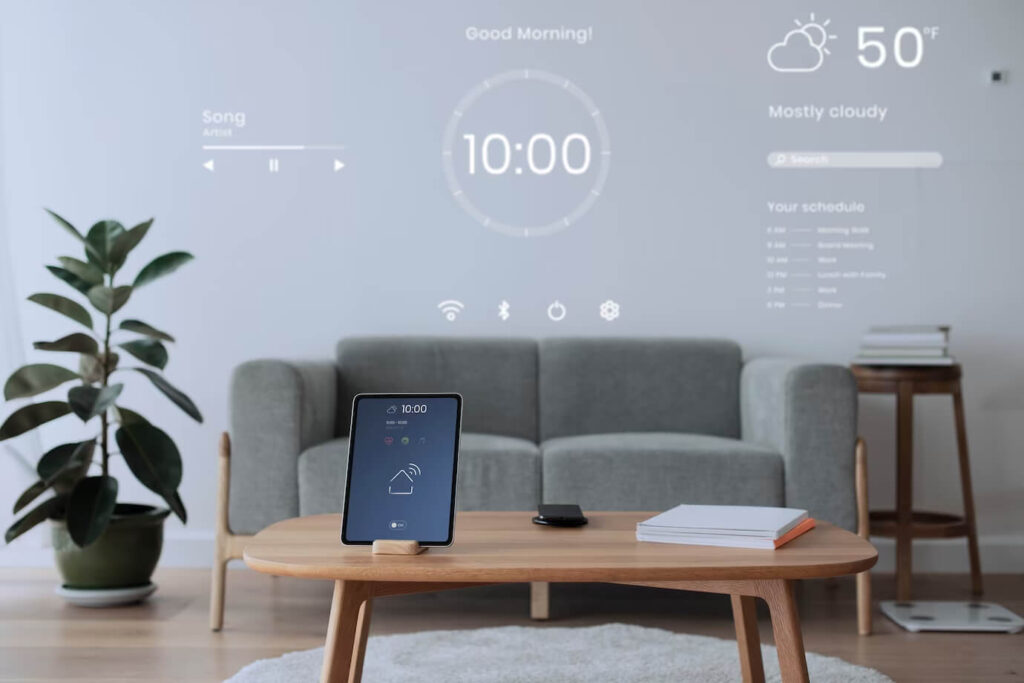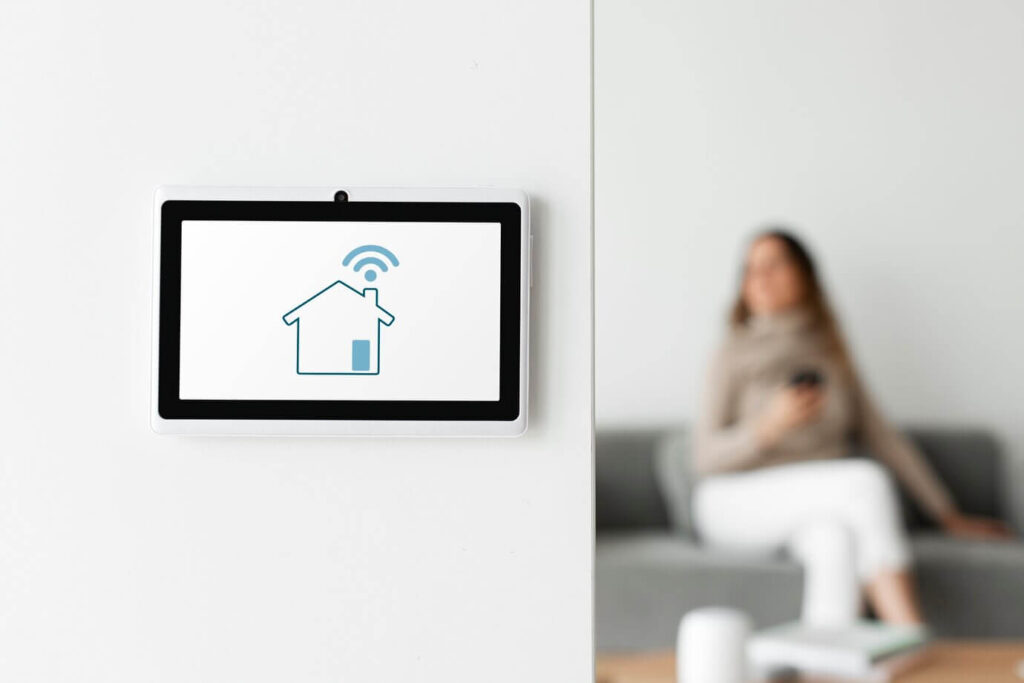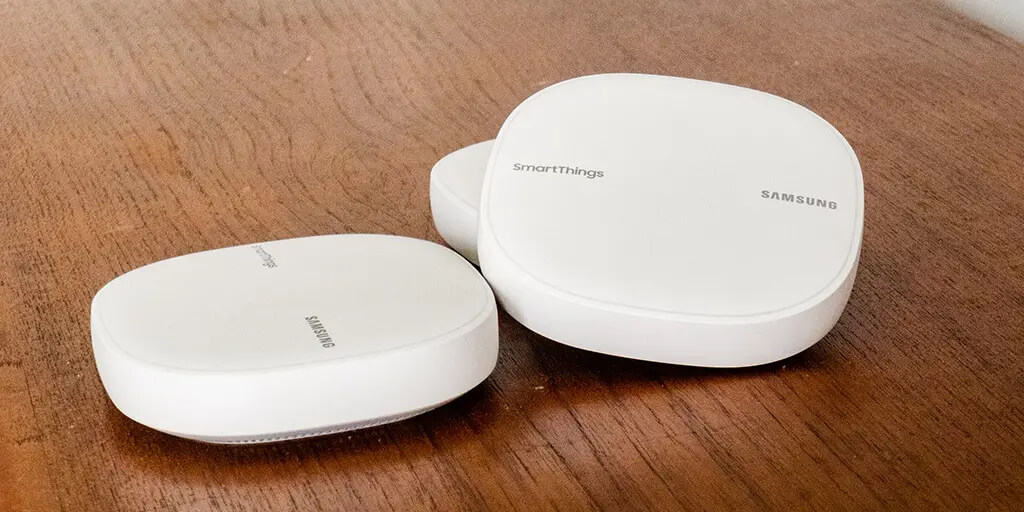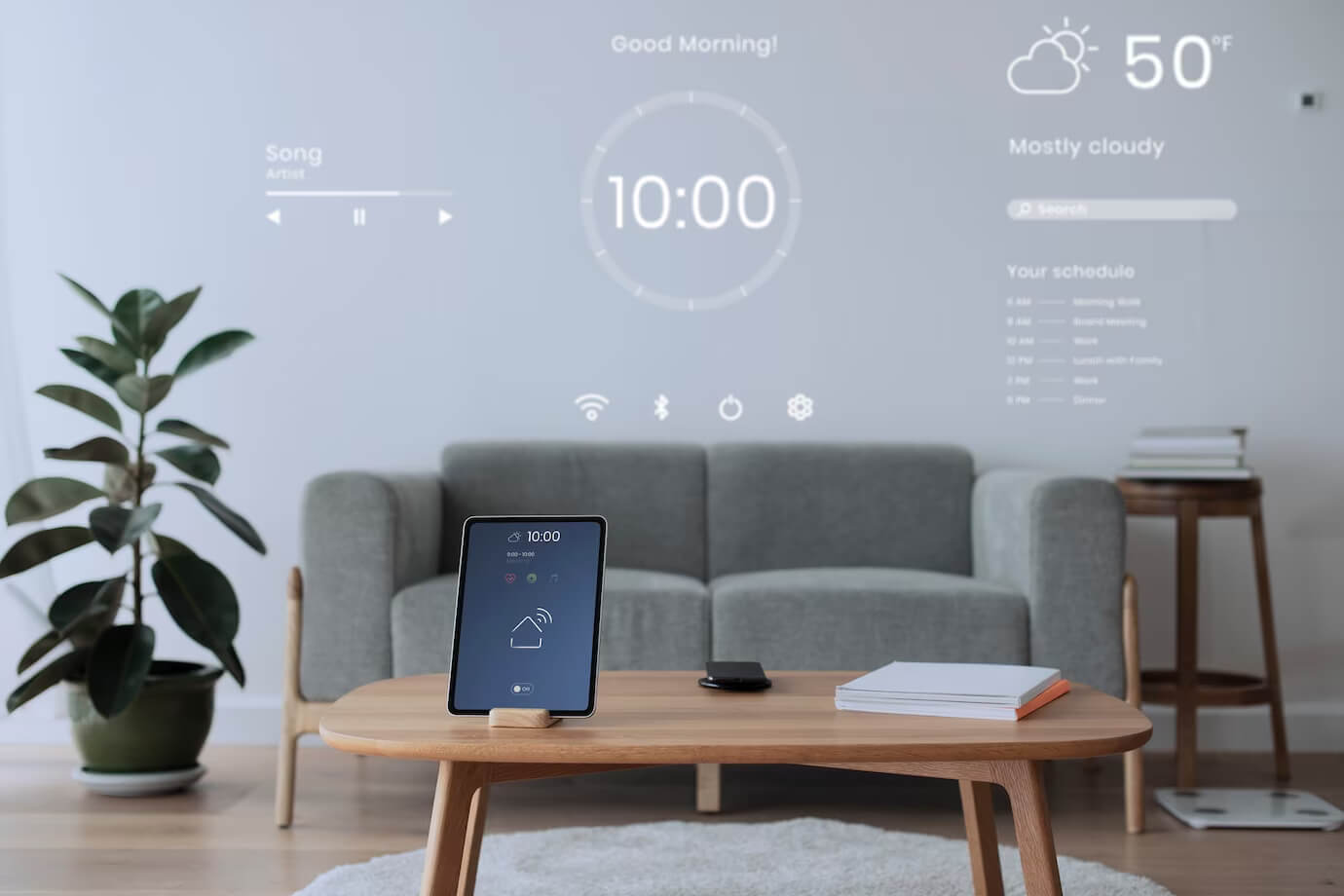Smart home hubs, the wizards behind the curtain of your connected abode, have revolutionized the way we live. Picture this: lights dimming at your command, coffee brewing with just a word, and doors locking themselves when you’ve forgotten for the umpteenth time. It’s the epitome of Jetsonian living, right in the heart of Brooklyn, New York.
Understanding Smart Home Hub Connectivity

Decoding the Hub Magic
Now that we’ve glimpsed into the futuristic allure of smart homes, it’s time for a crash course in hub-speak. Smart home hubs, like wizards in silicon robes, communicate with your devices using various wireless protocols. Think of these protocols as the spells that make your smart lights flicker and your thermostat dance to the digital beat.
| Wireless Protocols | Function |
| Wi-Fi | Connects devices to the internet for broader control |
| Zigbee | Facilitates communication between smart devices |
| Z-Wave | Ensures low-power, efficient communication |
Hub Hardware – The Nuts and Bolts
Beyond enchanting protocols, the hardware of your hub is the secret sauce. Its processing power, memory, and connectivity interfaces dictate how swiftly it can cast its spells. Choosing the right hub is akin to selecting a trusty sidekick – it needs the chops to handle your smart home’s diverse cast of devices.
Components at a Glance:
- Processor: The hub’s brain, determining how fast it can process commands.
- Memory: Think of it as the hub’s memory bank, storing preferences and settings.
- Connectivity Ports: USB, Ethernet – the hubs’ handshake with the outside world.
Interference – The Unseen Adversary
In our tech-packed world, interference is the mischievous sprite wreaking havoc on your smart home utopia. Imagine your Wi-Fi signal as a superhero, valiantly battling against neighboring Wi-Fi networks and other electronic devices.
Identifying Interference and Battling Back:
- Wi-Fi Spectrum Congestion: Switching to less crowded channels can be the hero Gotham (or your smart home) needs.
- Device Clutter: Relocating devices, especially those power-hungry microwaves, can eliminate connectivity headaches.
A Recipe for Robust Connectivity
Achieving seamless connectivity requires a concoction of the right protocols, robust hardware, and a sprinkle of interference-free magic. It’s a delicate ballet where Wi-Fi waltzes, Zigbee tangoes, and Z-Wave pirouettes, all orchestrated by your hub’s silicon symphony. Ready to dive deeper into the digital dance? Stay tuned for the troubleshooter’s guide!
Common Connectivity Issues

In our interconnected world, a dropped signal is akin to a magician revealing their tricks – it spoils the magic. Let’s dive into the abyss of common connectivity issues, demystifying the glitches that can turn your smart home into a digital haunted house.
Weak or Inconsistent Wi-Fi Signals
Ever had your smart speaker echo your command into a black hole?
- Potential Culprits:
- Router Placement: Like real estate, it’s all about location. Placing your router centrally can be the Wi-Fi equivalent of a penthouse view.
- Router Settings: Dive into those settings. Adjusting channel settings and enabling Quality of Service (QoS) can be game-changers.
- Solutions:
- Wi-Fi Extenders: Think of them as Wi-Fi boosters, extending your network reach.
- Mesh Networks: The Avengers of Wi-Fi, ensuring every corner gets its due signal strength.
Interference from Other Devices
Ever felt your smart lights flicker when the microwave starts its war cry?
- Identifying the Culprits:
- Device Audit: Know thy devices. Identify potential interference culprits like cordless phones and baby monitors.
- Wi-Fi Spectrum Analysis: Tools like Wi-Fi analyzers can unveil the invisible forces disrupting your signals.
- Solutions:
- Relocating Devices: Give conflicting devices some space, like quarantining frenemies for peaceful coexistence.
- Upgrading to 5GHz: Less crowded than its 2.4GHz counterpart, the 5GHz band can be your digital safe haven.
Device-Specific Disconnects
Why does the smart thermostat think it’s on vacation?
- Isolating the Issue:
- Device Compatibility Check: Not all devices play nice together. Ensure your hub and devices are from the same tech family.
- Firmware and Software Updates: Devices need their digital vitamins too – keep them updated.
- Solutions:
- Device Resetting: Sometimes, a digital reboot is all it takes.
- Manufacturer Support: When in doubt, seek the wisdom of the device manufacturer. They might hold the key to your troubleshooting quest.
Troubleshooting Smart Home Hub Connectivity

So, your smart home’s behaving like a rebellious teenager – moody, unpredictable, and seemingly immune to reason. Fear not, digital parent, for we’re diving headfirst into the realm of troubleshooting. Let’s put on our detective hats and decode the enigma of erratic connectivity.
Step-by-Step Assessment
Ever wonder if your hub is simply having a bad hair day?
- Initial Diagnosis:
- Hub Indicator Lights: Decode those blinking lights. They often hold the key to the hub’s inner turmoil.
- Device Check: Ensure all devices are where they should be. Sometimes, a misplaced smart bulb can trigger chaos.
- Questions to Ask:
- Is the Hub Powered On?
- Are Devices Physically Connected?
- Any Recent Changes to the Setup?
Checking Hub and Device Compatibility
Can your hub talk to your devices or are they engaged in a silent standoff?
- Compatibility Analysis:
- Check Device Specifications: Ensure devices adhere to the hub’s supported protocols.
- Firmware Updates: A digital handshake often requires the latest firmware. Update, update, update.
- Questions to Ask:
- Do Devices Speak the Same Protocol as the Hub?
- Is the Firmware Up to Date?
- Any New Devices Added Recently?
Reviewing Network Settings
Ever suspect your Wi-Fi is conspiring against you?
- Network Deep Dive:
- Router Settings: Access router settings to ensure they align with your smart home’s needs.
- QoS Configuration: Prioritize smart home traffic. Your Netflix binge can wait.
- Questions to Ask:
- Are Wi-Fi Channels Optimal?
- Is QoS Configured for Smart Devices?
- Any Recent Network Changes?
Firmware and Software Updates
Is your hub suffering from FOMO (Fear of Missing Updates)?
- Digital Immunization:
- Hub Updates: Ensure the hub’s firmware is up to date. Bugs begone!
- Device Updates: Individual devices crave attention too. Feed them their digital vitamins.
- Questions to Ask:
- When Was the Last Hub Update?
- Are Devices Running the Latest Software?
- Any Pending Firmware Notifications?
Isolating Specific Devices Causing Issues
Ever felt one rotten apple spoiling the entire barrel?
- Device Isolation:
- Disconnect Devices One by One: Identify the miscreant causing chaos.
- Test Connectivity: Isolate the device and see if the issue persists.
- Questions to Ask:
- Which Device Acts as the Connectivity Culprit?
- Does Disconnecting the Device Resolve the Issue?
- Any Patterns Noticed During Isolation?
Advanced Connectivity Optimization
Congratulations on navigating the labyrinth of connectivity troubleshooting! Now that we’ve mastered the basics, it’s time to delve into the realm of advanced optimization. Buckle up, tech enthusiast, as we explore the high-tech avenues to ensure your smart home not only functions but thrives in digital excellence.
Implementing Quality of Service (QoS)
Ever wished your smart commands held VIP status on your network?
- Prioritizing Digital Traffic:
- Identify Critical Devices: Label devices that demand priority – security systems over smart toasters.
- QoS Configuration: Access router settings to assign priority to your smart devices.
- Benefits:
- Reduced Lag for Critical Devices
- Optimized Bandwidth Allocation
Network Segmentation for IoT Devices
Isolating the Internet of Things for a digital utopia.
- Creating IoT Zones:
- Separate Networks for Smart Devices: Segment your network to keep IoT devices in their virtual lane.
- Enhanced Security Measures: Isolate potential vulnerabilities, protecting core devices.
- Advantages:
- Minimized Interference
- Enhanced Security Measures
Upgrading Hardware for Improved Performance
Is your smart home hub still living in the digital dark ages?
- Hub and Router Upgrade:
- Latest Hardware Specifications: Invest in hubs and routers with updated processors and enhanced memory.
- Wi-Fi Standards: Embrace the latest Wi-Fi standards for faster and more reliable connections.
- Gains:
- Faster Command Execution
- Enhanced Device Compatibility
Integrating 5G Connectivity
Does your smart home crave the speed of the digital Autobahn?
- 5G Integration:
- 5G-Compatible Devices: Embrace the era of 5G-compatible devices for lightning-fast connectivity.
- Router Upgrade: Invest in routers that support 5G connectivity for your smart home.
- Pros:
- Ultra-Fast Data Transfer
- Reduced Latency for Real-time Applications
Artificial Intelligence in Connectivity Optimization
Ever wished your smart home could learn and adapt?
- AI-Driven Optimization:
- Predictive Analysis: AI algorithms analyze usage patterns to predict connectivity needs.
- Automated Adjustments: Smart homes adapt settings based on AI insights, optimizing performance.
- Advantages:
- Adaptive Connectivity
- Efficient Resource Utilization
Future Trends in Smart Home Connectivity
As our smart homes evolve, so does the landscape of connectivity. Let’s peer into the crystal ball of technology and explore the imminent trends that promise to reshape the way our devices communicate and collaborate. The future of smart home connectivity is as intriguing as it is promising.
The 5G Integration Revolution
Are you ready for the fifth-generation leap in connectivity?
- Speed Unleashed:
- Ultra-Fast Data Transfer: 5G heralds speeds that redefine the meaning of real-time communication.
- Low Latency: Reduced lag ensures instantaneous responses, perfect for smart home applications.
- Impact on Smart Homes:
- Enhanced Smart Device Performance
- Seamless 4K Streaming and VR Experiences
Artificial Intelligence at the Helm
Imagine a smart home that learns and adapts to your preferences.
- Predictive Connectivity:
- Usage Pattern Analysis: AI algorithms analyze historical data to predict future connectivity needs.
- Automated Adjustments: Smart homes autonomously optimize settings based on AI insights.
- Impact on Smart Homes:
- Adaptive Connectivity for Personalized Experiences
- Efficient Resource Utilization for Energy Savings
Integration of Edge Computing
Bringing intelligence closer to home for instantaneous decision-making.
- Processing Power at the Edge:
- Local Data Processing: Edge computing reduces reliance on cloud servers for faster response times.
- Privacy Enhancement: Sensitive data stays closer to home, bolstering privacy.
- Impact on Smart Homes:
- Reduced Latency in Device Interactions
- Enhanced Privacy and Security Measures
Mesh Networks Evolution
Say goodbye to connectivity dead zones with the evolution of mesh networks.
- Decentralized Connectivity:
- Interconnected Nodes: Mesh networks create a decentralized web of interconnected devices.
- Self-Healing Networks: Automatic rerouting ensures seamless connectivity, even if a node goes offline.
- Impact on Smart Homes:
- Elimination of Wi-Fi Dead Zones
- Scalable Networks for Growing Smart Home Ecosystems
Integration of Blockchain for Enhanced Security
Securing the digital fortress with blockchain technology.
- Immutable Security:
- Tamper-Proof Transactions: Blockchain ensures the integrity of smart home data.
- Decentralized Authentication: Enhanced security through decentralized identity verification.
- Impact on Smart Homes:
- Resilient Protection Against Cyber Threats
- Trustworthy Device Authentication and Communication
A Connected Tomorrow
As we conclude this expedition into the heart of smart home connectivity, remember that the digital journey is ongoing. The landscape will continue to evolve, and so must our knowledge and practices. With each lesson learned, each challenge overcome, our connected tomorrows become more promising.
So, fellow digital pioneers, as you navigate the ever-connected landscape of smart homes, may your devices always dance in harmony, your connectivity be seamless, and your journey be filled with the joy of living in the future, today. Happy smart home living!
Frequently Asked Questions (FAQ)
- What is a smart home hub?
A smart home hub is a central device that acts as a control center for various smart devices within a home. It facilitates communication between different devices, allowing users to manage and automate their connected devices through a single interface.
- What wireless protocols do smart home hubs use?
Smart home hubs commonly use wireless protocols such as Wi-Fi, Zigbee, and Z-Wave. Wi-Fi enables internet connectivity, while Zigbee and Z-Wave are low-power, short-range protocols designed for communication between smart devices.
- How do I troubleshoot weak Wi-Fi signals in my smart home?
To troubleshoot weak Wi-Fi signals, consider optimizing router placement, adjusting channel settings, and using Wi-Fi extenders or mesh networks. Ensure that devices are within the optimal range of the router for better signal strength.
- What should I do if my smart devices are experiencing interference?
Identify and relocate devices causing interference, such as cordless phones or microwaves. Switching to less crowded Wi-Fi channels and upgrading to devices that operate on the 5GHz band can also minimize interference.
- How can I troubleshoot connectivity issues with my smart home hub?
Start by checking indicator lights on the hub, ensuring device compatibility, reviewing network settings, and updating firmware. If issues persist, isolate specific devices causing problems and seek assistance from manufacturer support.
- What are the benefits of Quality of Service (QoS) in smart home connectivity?
QoS prioritizes critical devices, ensuring they receive preferential treatment on the network. This leads to reduced lag for important applications and optimized bandwidth allocation for a smoother smart home experience.
- How can I secure my smart home network?
Secure your smart home network by using strong, unique passwords, enabling WPA3 encryption standards, and setting up a separate guest network. Regularly update firmware for devices and hubs to patch potential vulnerabilities, enhancing overall security.
- What are the future trends in smart home connectivity?
Future trends include the integration of 5G for faster connectivity, increased use of artificial intelligence for adaptive optimization, the evolution of mesh networks to eliminate dead zones, and the integration of blockchain for enhanced security measures.
- How can users contribute to the security of their smart homes?
Users can contribute to security by adopting strong password practices, keeping devices and hubs updated with the latest firmware, and being aware of potential security risks. Regularly reviewing and implementing security best practices will help maintain a secure smart home environment.
- Where can I find additional support for smart home connectivity issues?
For additional support, check online knowledge bases provided by manufacturers, participate in community forums, and utilize customer support channels, including helplines and live chat services. Manufacturers often offer resources such as troubleshooting guides and video tutorials for assistance.


